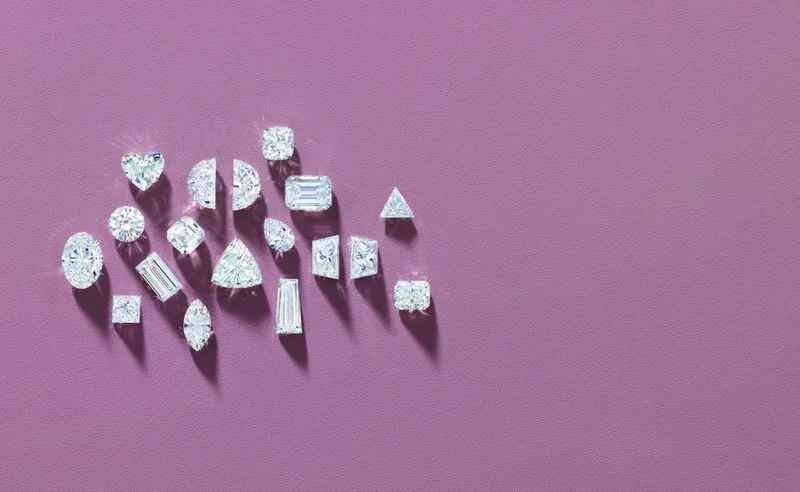Article: Lab Grown vs. Natural

Lab Grown vs. Natural
When it comes to choosing the perfect gemstones for your jewelry, you're faced with a crucial decision: natural or lab-made? Both options have their advantages and disadvantages. In this blog post, we will explore the pros and cons of lab-made diamonds and gemstones compared to their natural counterparts.
First, it's important to understand that lab-made and natural gemstones have an identical compositional structure. Whether formed deep within the Earth's crust or created in a controlled laboratory setting, both are made of the same elements and possess the same stunning beauty.
Lab Grown Stones
Lab-made diamonds are meticulously engineered in state-of-the-art facilities, following intricate processes to replicate the natural diamond-growing environment. The two most widely utilized techniques in lab diamond production are High Pressure High Temperature (HPHT) and Chemical Vapor Deposition (CVD).
- High Pressure High Temperature (HPHT): The HPHT method recreates the extreme conditions found deep within the Earth's mantle, where natural diamonds are formed over millions of years. During the HPHT process, a small diamond seed, often a thin slice of a natural diamond, is placed inside a growth cell. This cell is then exposed to extremely high pressure, typically reaching around 725,000 pounds per square inch (psi), and elevated temperatures, soaring to approximately 2,200 degrees Celsius. These intense conditions stimulate the carbon atoms within the growth cell to rearrange and crystallize around the diamond seed. Over time, additional carbon atoms adhere to the growing structure, contributing to the expansion of the diamond. This intricate process results in the formation of a larger, fully grown lab-made diamond that shares the same crystalline structure as its natural counterparts.
- Chemical Vapor Deposition (CVD): The CVD method, on the other hand, operates in a vacuum chamber to create lab-made diamonds. A tiny diamond seed, often mounted on a substrate, is placed inside the chamber. The chamber is then filled with a hydrocarbon gas, typically methane, and the substrate is heated using specialized techniques. As the gas is energized, carbon atoms separate from the gas molecules and precipitate onto the diamond seed. These carbon atoms accumulate, layer by layer, as the seed slowly rotates or is otherwise agitated. Gradually, the carbon atoms bond together, forming a larger diamond around the initial seed. This meticulous process is meticulously controlled to ensure the growth of a high-quality diamond. The result is a lab-made diamond that mirrors the same crystalline structure and composition as natural diamonds, making them indistinguishable to the naked eye.
These precise techniques for growing lab-made diamonds have opened up new possibilities in the jewelry industry. They provide ethically sourced and customizable gemstone options that cater to a range of preferences and ethical considerations, all while maintaining the remarkable beauty and chemical composition of natural diamonds.
Lab-grown gemstones offer several distinct advantages. First, they are produced in an environmentally friendly and ethical manner, contributing to responsible sourcing practices. Second, they are cost-effective, making them an excellent choice for individuals seeking larger or high-quality stones. Lastly, customization is a key feature, allowing you to select the perfect size, shape, and color to match your unique preferences.
They also come with certain drawbacks. They lack the ability to appreciate in value over time since their supply can be continually replenished. If rarity and uniqueness are crucial to you, lab-made gemstones may not possess the same allure as natural stones. Additionally, some individuals may attribute a higher perceived value to natural gemstones due to their traditional association with rarity and exclusivity.
Natural Stones
Natural diamonds and gemstones, on the other hand, are created through geological processes over millions of years. They are finite and genuinely unique, with each stone bearing a distinct history and story.
The pros of natural gemstones are evident: they embody rarity and uniqueness, with no two stones alike. Their limited supply, along with their intrinsic beauty, enhances their allure. Over time, natural diamonds and gemstones typically appreciate in value, making them a favorable investment choice. Furthermore, their rich history and inherent rarity contribute to significant sentimental value, making them a perfect choice for heirlooms and special occasions.
However, natural gemstones come with their set of drawbacks. The higher cost can be a significant barrier, rendering them less accessible to certain consumers. Ethical concerns may also arise from sourcing natural gemstones, as the mining industry might not always adhere to the strictest environmental and human rights standards. While natural gemstones may have imperfections, these characteristics can add to their uniqueness and charm, appealing to those who appreciate the beauty of imperfection. These factors are integral in deciding whether to opt for natural or lab-made gemstones.
Metals in Fine Jewelry: It's essential to note that regardless of whether you choose lab-made or natural gemstones, the precious metals in fine jewelry will always appreciate in value. Materials like gold and platinum are inherently valuable and can serve as a long-term investment, complementing the gemstones you select.
The choice between lab-made and natural gemstones ultimately depends on your personal preferences, budget, and ethical considerations. While lab-made gemstones offer affordability, customization, and sustainability, natural gemstones provide rarity, long-term appreciation value, and sentimental significance. Your decision will be guided by what you value most in your fine jewelry, and remember, the metals in your jewelry will always be a sound investment choice.
Leave a comment
This site is protected by hCaptcha and the hCaptcha Privacy Policy and Terms of Service apply.